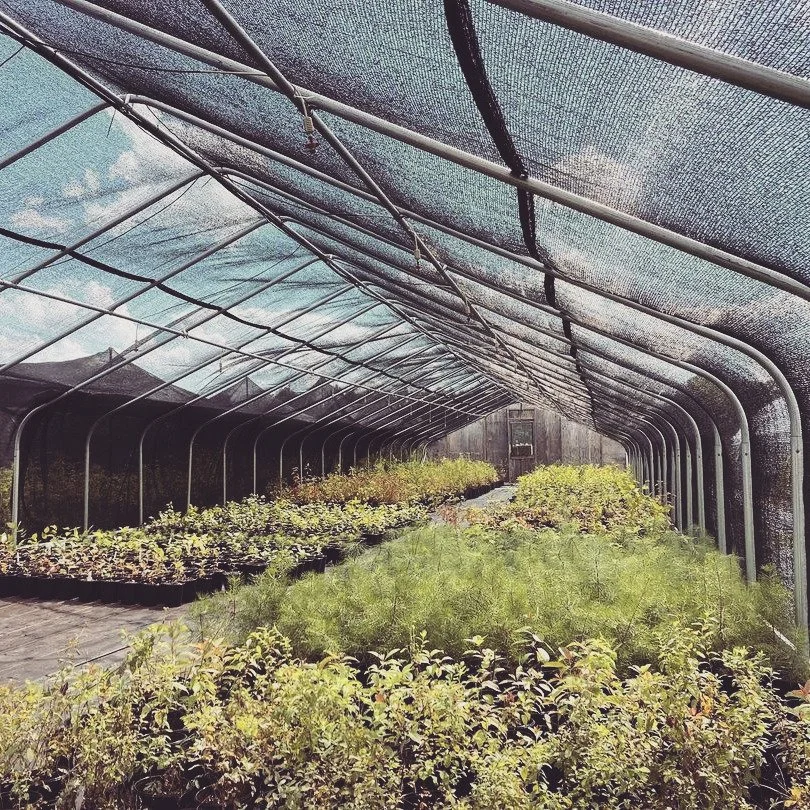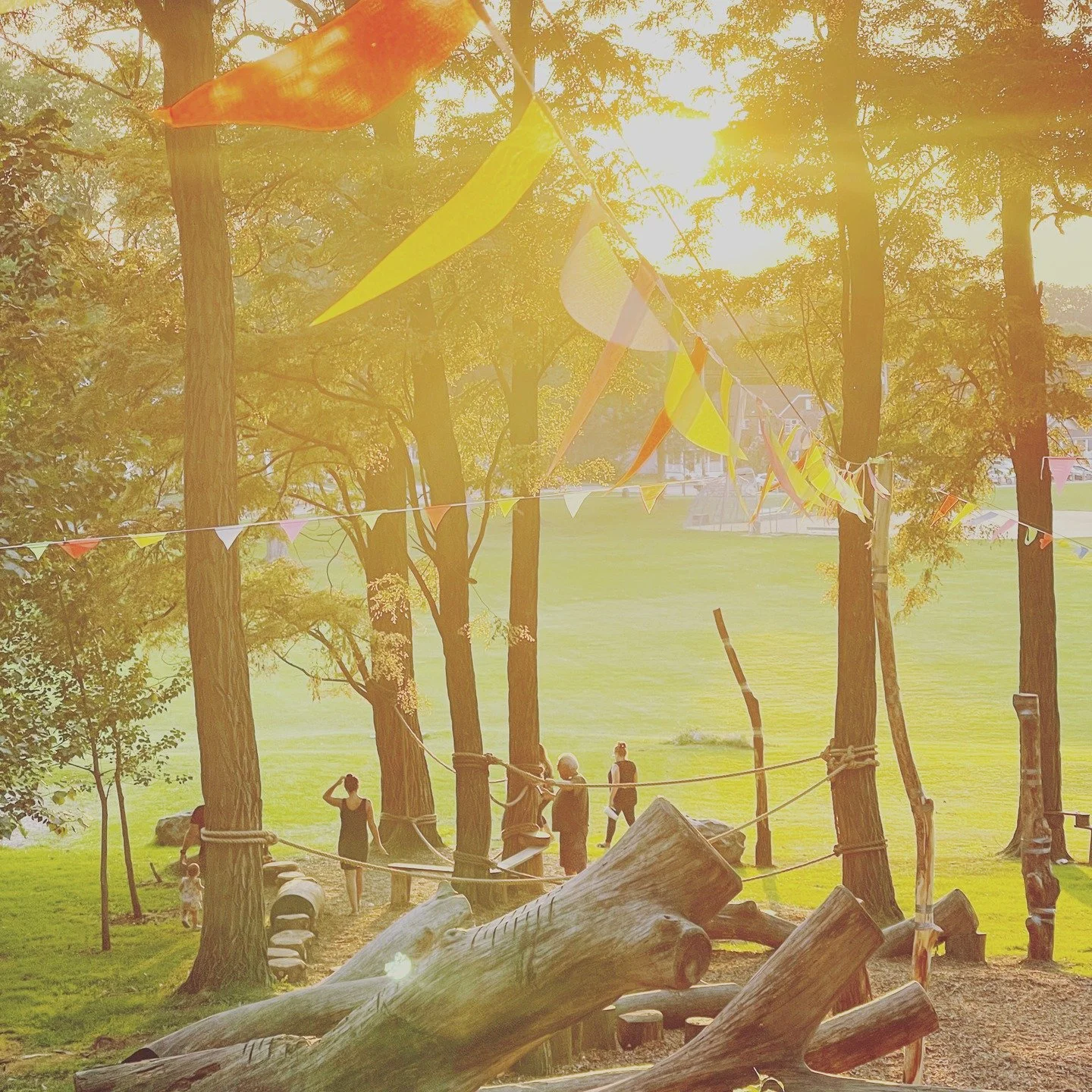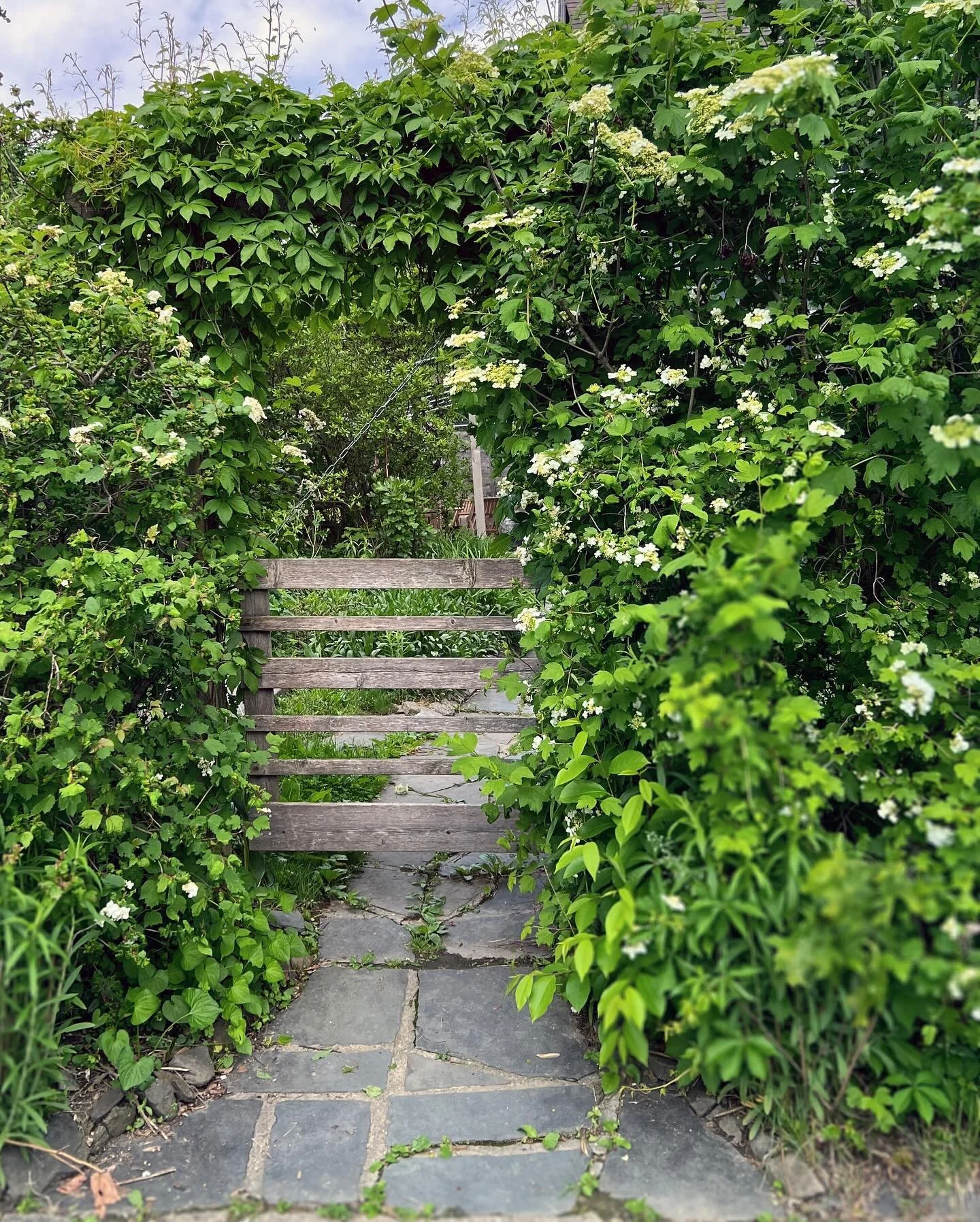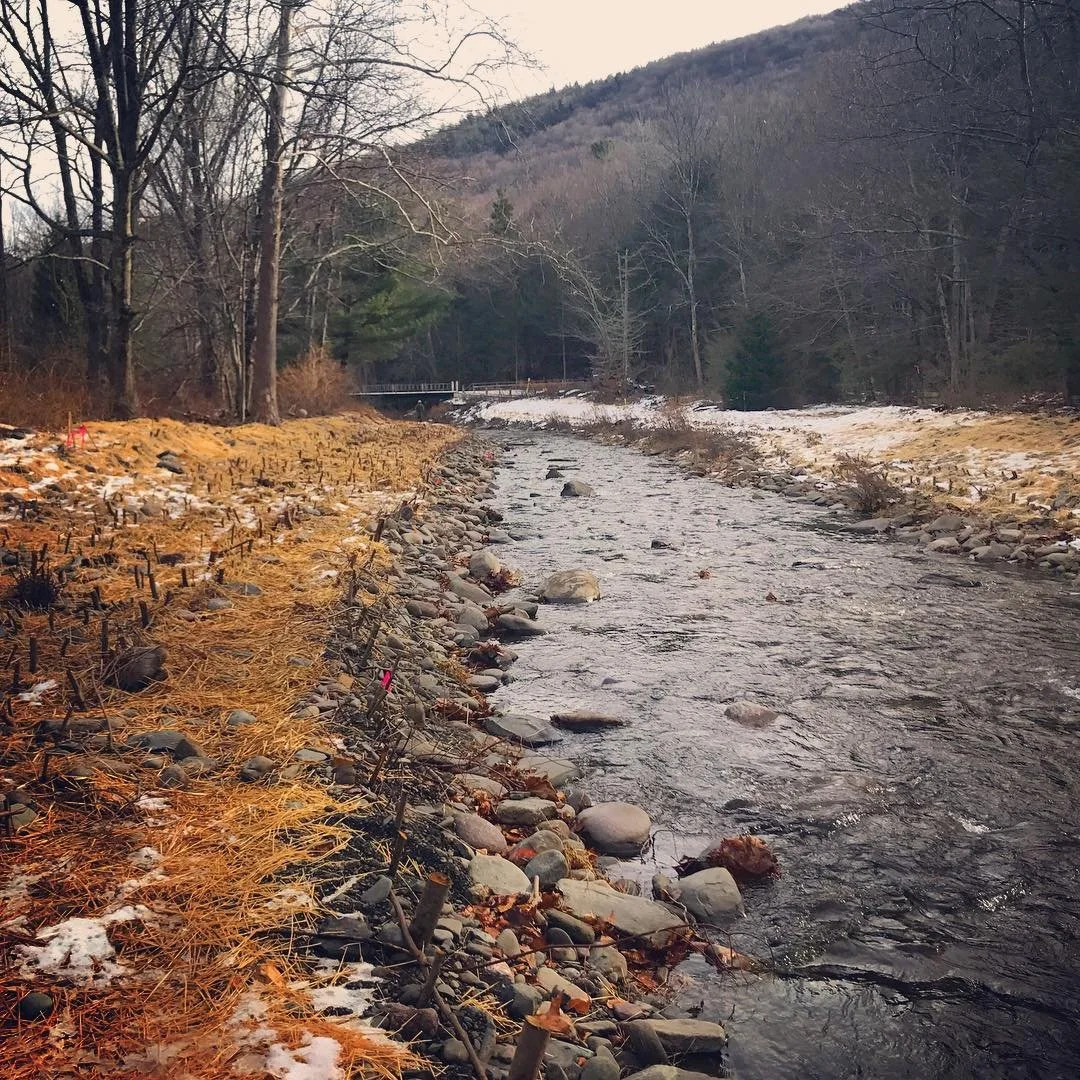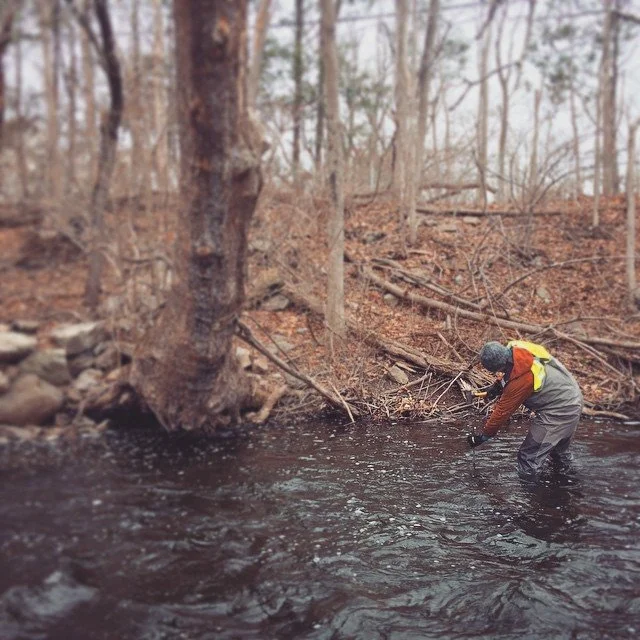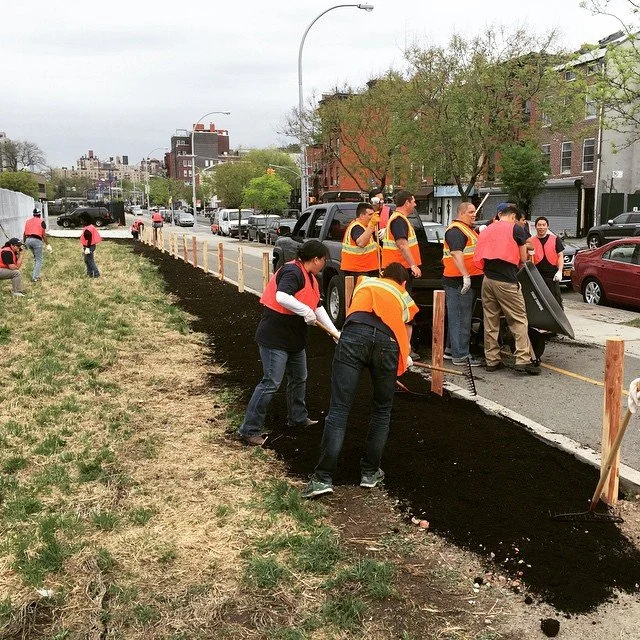Beacon Refugia
The Beacon Refugia project transforms suburban gardens into vibrant sanctuaries, reconnecting people and wildlife to the rhythms of nature. Rooted in the concept of refugium, we craft native-plant landscapes that restore biodiversity, manage stormwater, and providse a model for other communities concerned about the environmental crisis. Together, these gardens form a 28-acre ecological network across Beacon, growing by seven acres annually. Each garden is a living work of art, fostering joy, harmony, and resilience for homeowners and ecosystems alike. With over 115 properties included, the project inspires a replicable vision where every community becomes a steward of the earth, honoring the need for ecological interconnectedness and beauty in our everyday lives.
Vassar Learning Forest
Our studio was invited to create an immersive, plant-centered installation at Vassar Learning Forest. Once a stone storage site, the area had evolved into a perched wetland supporting native species. We worked with this living system, introducing a gently trickling stream and waterfall to enhance habitat diversity. Two plankways provide access while protecting sensitive ground, and raised terraces of local boulders mark the entrance and exit. Through subtle grade changes, water features, and quiet pathways, the installation encourages visitors to slow down and observe the ongoing dialogue between human presence and the natural rhythms of plant life.
Reclaimed Bluestone and Brick Labyrinth
This labyrinth was conceived as a sculptural commission—a work that required as much from our hands as from our eyes. As builders and artists, we approached it as both craft and expression, shaping reclaimed brick and bluestone from Vassar College’s campus into something meant to endure, quiet the mind, and hold meaning. Labyrinths possess deep cultural roots, older than any single tradition, stretching from ancient Greek, Roman, and Egyptian contexts. While many recall the mythic Cretan Labyrinth, what resonated with us was its essential simplicity: a single, unbroken path designed not to confound but to guide inward. Unlike mazes, which are puzzles, a labyrinth offers a meditative line—a spatial poem, moving slowly toward center and back.
NYC DEP Contract Grow
From 2015 to 2025, we cultivated thousands of native plants under contract with the NYC Department of Environmental Protection, supporting riparian restoration in the Catskill watershed. Starting at Common Ground Farm and moving to Lost Creek in 2019 for greater capacity, we grew containerized trees and shrubs from regionally collected seeds. Using organic methods, these plants helped maintain clean drinking water for New York City while promoting biodiversity. After completing the contract, we concluded our operations at Lost Creek, relocating key plant materials to our demonstration garden.
Taconic Lakefront
This Taconic Mountain project re-enchanted ecological function, blending restoration with sustainable development to breathe new life into a pristine freshwater ecosystem and provide critical meadow patches to support the Lake's insect and bird community. Since 2017, our team has worked to heal degraded landscapes and reawaken ecological vitality, enhancing habitats to support diverse wildlife and flourishing plant communities. Through erosion control, strategic plantings, and repurposing onsite materials like stone, we restored balance and resilience. The stagnant pond became a vibrant hub of biodiversity through careful dredging, habitat enhancements, and stewardship. Trails, gardens, and lakefront spaces were thoughtfully created to reconnect people with the revitalized ecosystem, fostering harmony between humans and the reawakened environment.
Sunken Garden
In 2022, we built a small sunken garden that became an ongoing exercise in both creativity and close observation. One side of the two-story unit faced directly into this carefully composed space, while the opposite side opened out onto the Fishkill Creek. That contrast—between the defined garden and the open, flowing creek—set the tone for the whole project. It was about creating something intentional yet responsive, structured yet connected to its surrounding ecology.
Black Locust Deck
Take a closer look—this isn’t your typical deck. At first glance, it might seem familiar, but a careful inspection reveals something entirely different. Look at the thoughtfully considered angles, the precise joints, the seamless transitions where boards meet. Each detail reflects genuine craftspersonship: the deliberate decision-making, the patience, and the steady hands that shape wood into more than just a surface to walk on. These subtle architectural elements create a structure that is both functional and expressive, a true one-of-a-kind feature that stands apart from mass-produced or off-the-shelf designs.
Forest Playground at Memorial Park
Wee Woods in Beacon, NY is a gentle collaboration between the land and the community. This space, brought to life by the efforts of local volunteers and One Nature, reflects a simple yet profound appreciation for the environment. The former grove of Black Locust trees has been thoughtfully transformed into Poplar groves and a living Willow hedge, fostering renewal and biodiversity. Repurposed Elm wood has been used to create engaging play structures, inviting quiet exploration and connection with the surroundings. Wee Woods is a humble space, encouraging families to rediscover the beauty of the world and its capacity to inspire and heal.
Hudson Highlands Forest Restoration
We completed a large-scale ecological restoration project in the Hudson Highlands, addressing critical challenges such as invasive species, habitat loss, and climate change impacts. Using a Collaborative Adaptive Management (CAM) framework, we implemented solutions like deer exclusion fencing, tree planting guided by climate models, and wetland restoration planning. We erected a nearly mile-long fence to protect forest understories and planted 157 trees from 22 species to promote biodiversity. Our work helped improve habitat connectivity and laid the groundwork for long-term ecosystem recovery. We’re proud to have restored resilience and balance to this historic and vital landscape.
Safe Harbors Green
Safe Harbors Green is a vibrant urban oasis that transforms a once-neglected lot into a multi-tiered landscape of biodiversity, community, and sustainability. Designed with accessibility and inclusivity in mind, the park features ADA-compliant paths, a water-saving swale system, and over 50 native plant species that attract pollinators and wildlife. As both a tranquil retreat and a cultural hub, it offers spaces for reflection, concerts, festivals, and farmers' markets. This collaborative project showcases the power of public green spaces in advancing environmental justice and reimagining urban living. Safe Harbors Green inspires connection, hope, and a sustainable future for all.
Elevated Forest and Edible Landscape
This urban garden project in Newburgh transforms a bustling street corner into a serene, functional, and visually captivating space. Featuring a sculptural cedar fence weaving through elevated earthen berms, the site blends artistic expression with practical solutions like privacy, sound buffering, and urban gardening. Edible plants thrive within accessible zones, while ornamental plantings enhance external views. Using handcrafted 3D models, the team balanced aesthetic appeal with site-specific challenges, including local regulations. Inspired by historical mounding practices, this project highlights how reimagined landscapes can address urban noise and clutter while fostering ecological richness and creating a welcoming environment for all.
Ironstar Farm Ecological Master Plan
This land in Ancram, New York—a place of gently sloping fields, second-growth forest, and a perennial stream winding through the lowlands—was the subject of our deep and deliberate listening. The wind already had a way through it. Trees cast long shadows across meadows where birds rose and fell with the seasons. The land was already speaking. Our work was to respond.
The Bee Farm
When we at One Nature first took on the Bee Farm project, it was a land rich in stories and potential, one of those places where history and nature seem to meet and hold hands. The name itself, Bee Farm, came from a former steward of the land who dedicated it to nurturing honey bee habitats across all four seasons. Ten Mile Creek, winding its way through the property, carries its own deeper past, as it once sustained the Wawyachtonoc people. This project has become our way of honoring those who came before us while planning something lasting for those to come.
Vassar Preserve Agroecological Master Plan
We’re proud to have worked with Vassar College to reimagine the Vassar Farm & Ecological Preserve—a 527-acre haven for sustainability, education, and community connection. From native plant orchards to car-free trails, immersive artist residencies to “forever wild” protected habitats, this vision combines cutting-edge ecological restoration with a commitment to community engagement. Together, we’ve created a space that inspires creativity, fosters environmental stewardship, and sets a new standard for sustainable design.
Bushkill Creek Bioengineering
Bushkill Creek’s transformation showcases the power of bioengineering and ecological restoration. Following devastating floods in 2011, One Nature collaborated with experts to stabilize banks, regulate water flow, and revive the creek’s ecosystem. Using live fascines, trench packing, and native plants, the project slowed stream flow velocity, reduced erosion, and encouraged long-term vegetative growth. Native species like sycamore and willows were introduced to create a thriving, self-sustaining habitat. This effort restored ecological balance and improved water quality, demonstrating how bioengineering can heal degraded waterways and ensure resilience for future generations. Bushkill Creek now thrives as a model of sustainable restoration.
Norwalk River Watershed Analysis
We at One Nature are deeply invested in the restoration of watersheds, which are vital to the ecological identity of communities. In partnership with the Mianus Chapter of Trout Unlimited, we assessed the challenges faced by the Unnamed Brook, a tributary of the Norwalk River. Our findings revealed significant degradation caused by a water intake facility, reducing downstream flow and raising water temperatures. To address this, we proposed modifications to the facility, replanting riparian buffers, and reconnecting floodplains. These efforts aim to restore the brook as a thriving habitat, enhancing the entire watershed while serving as a model for regional restoration.
Cummings Pond Restoration Plan
Cummings Pond in Stamford, Connecticut, has suffered decades of decline due to sedimentation, pollution, and urban development. One Nature’s restoration plan addresses the entire watershed, aiming to reduce upstream runoff, restore the pond’s ecological health, and revive downstream tidal marshes. Proposed solutions include planting urban trees, installing permeable pavements, dredging the pond, creating filtration wetlands, and daylighting a buried tidal stream. These changes will improve water quality, support diverse habitats, and enhance community access. By balancing ecological restoration with resilience to rising seas, the plan envisions a thriving, sustainable landscape that benefits both nature and the Stamford community.
Landscape Reanimation
This 5.5-acre Hudson Highlands property has been transformed into a sanctuary that unites people, wildlife, and the land. Through regenerative practices such as pollinator gardens, meadow restoration, and edible landscaping, biodiversity flourishes. Sweeping views of the Hudson River and surrounding forests reinforce the connection between landscapes. Key efforts included stormwater management with swales, the planting of 13,000 pollinator plants, and the creation of a Miyawaki forest. The edible orchard, featuring apples, persimmons, and blueberries, nourishes both humans and wildlife. This project is a testament to unity, stewardship, and harmony, restoring balance and fostering a thriving ecosystem for future generations.
Ash Creek Estuary Ecological Master Plan
Since 2010, One Nature has spearheaded the ecological restoration of the Ash Creek Estuary, blending science-driven strategies with innovative design. This vital urban sanctuary, rich in biodiversity, faces mounting threats from urbanization, pollution, and rising sea levels. Leveraging advanced ecological modeling and community collaboration, One Nature has crafted a master plan that restores wetland habitats, reinforces shorelines with living structures, and revives natural ecosystems. Guided by a commitment to resilience and sustainability, One Nature’s work ensures Ash Creek remains a haven for wildlife and a natural refuge for the community, preserving its ecological and cultural significance for future generations.
Brooklyn Greenway Pollinator Strip
In 2013, the Brooklyn Greenway Initiative transformed the waterfront along Van Brunt and Columbia Streets by creating vibrant ecological corridors rooted in the unique biodiversity of Brooklyn’s vacant lots. Based on extensive local botanical surveys, this project, designed by OneNature, restored native plant communities that reflect the area’s natural heritage. By introducing resilient, pollinator-friendly species from the region’s own landscapes, it revitalized neglected spaces into thriving urban ecosystems. This community-driven initiative blended meticulous planning, seasonal stewardship, and ecological insight, offering a sustainable model of green urban design that celebrates the untapped potential of Brooklyn’s forgotten botanical treasures.




